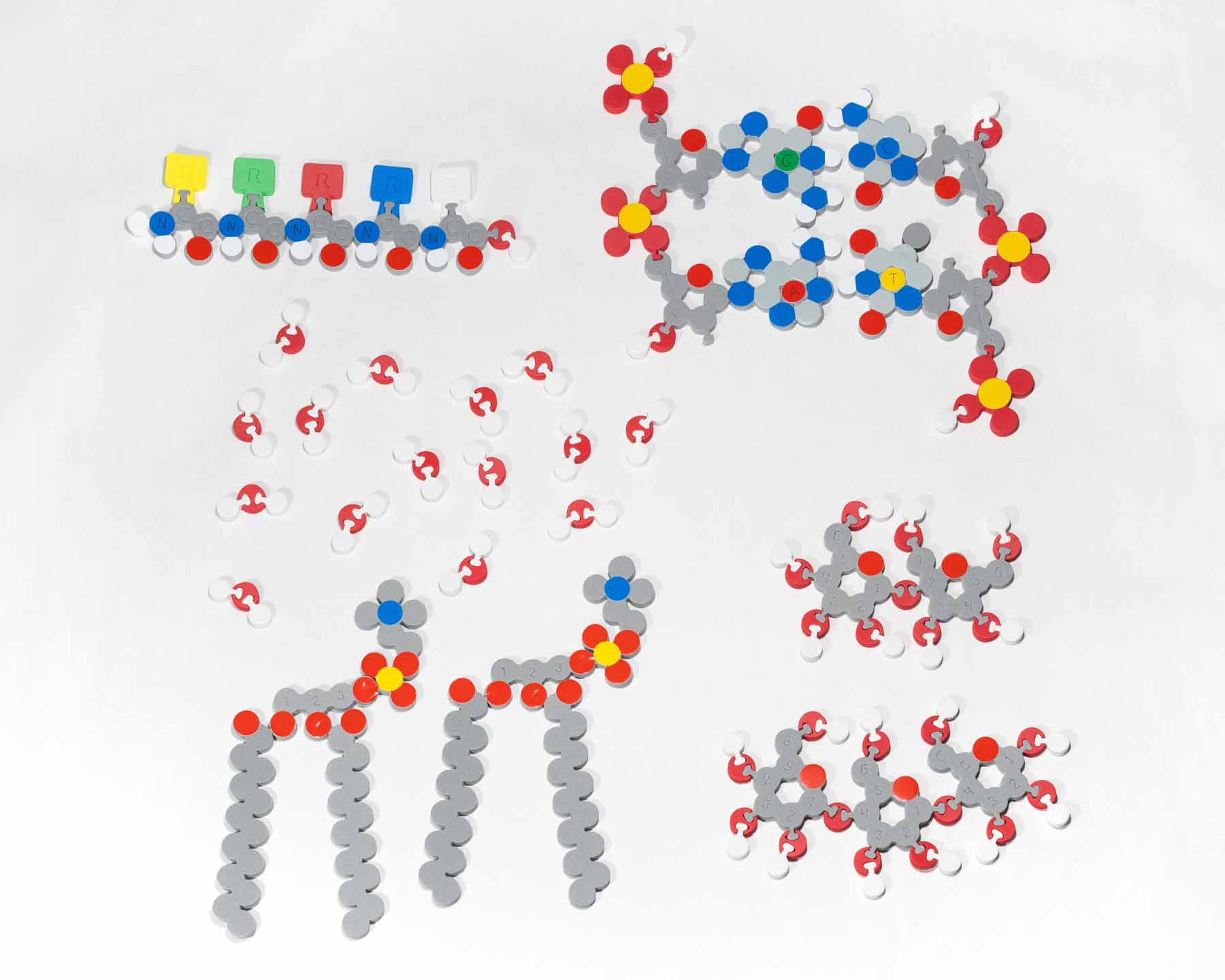

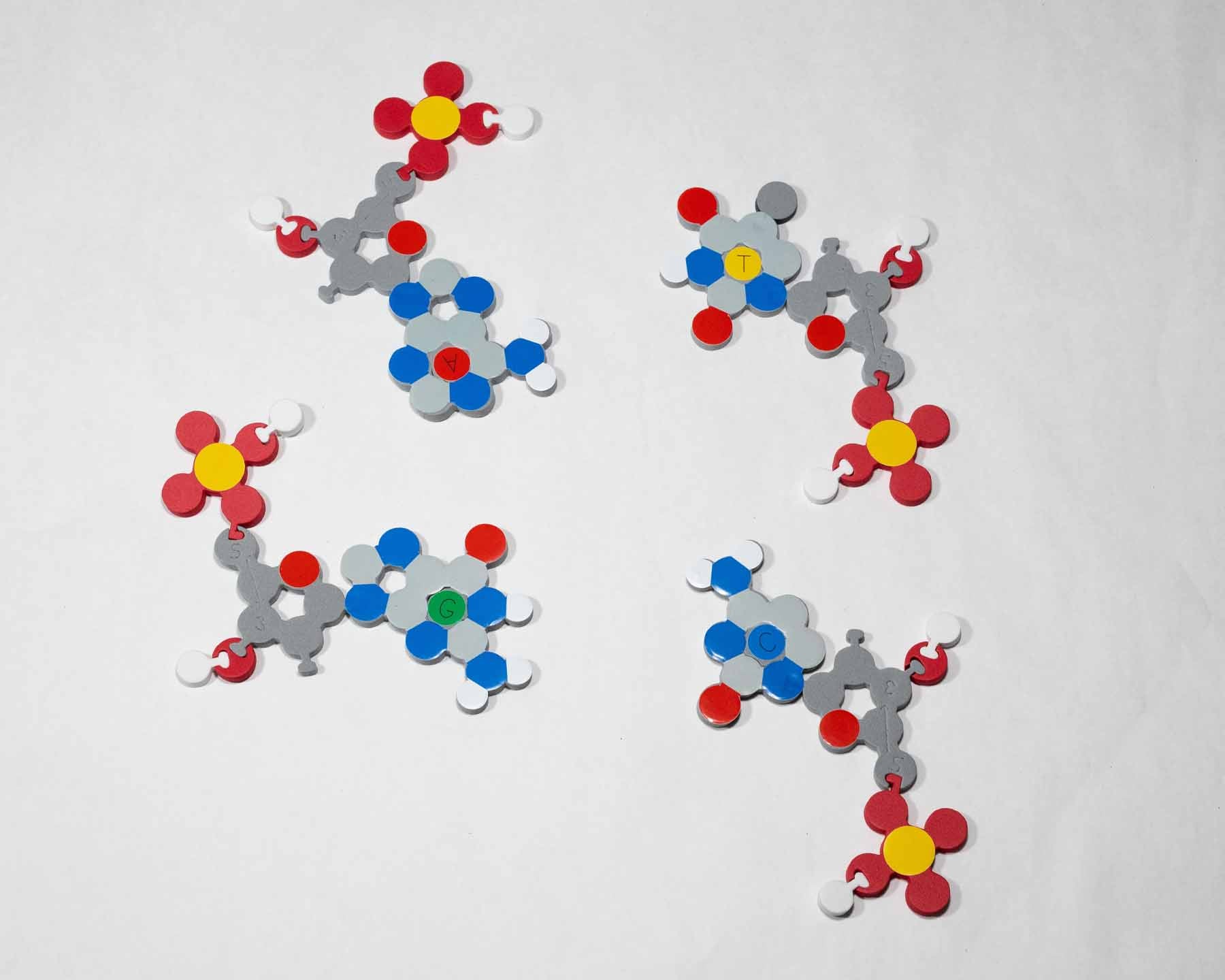

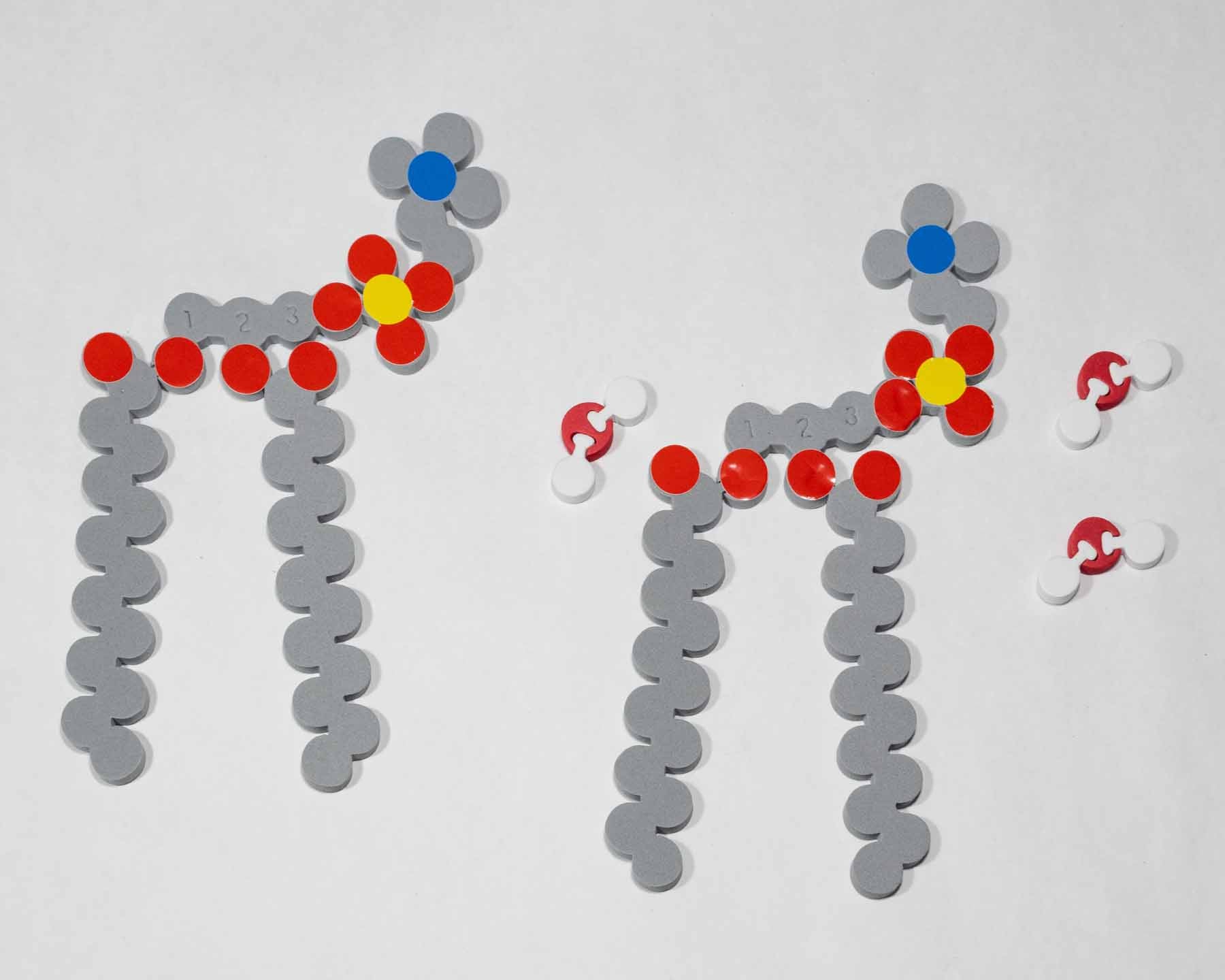

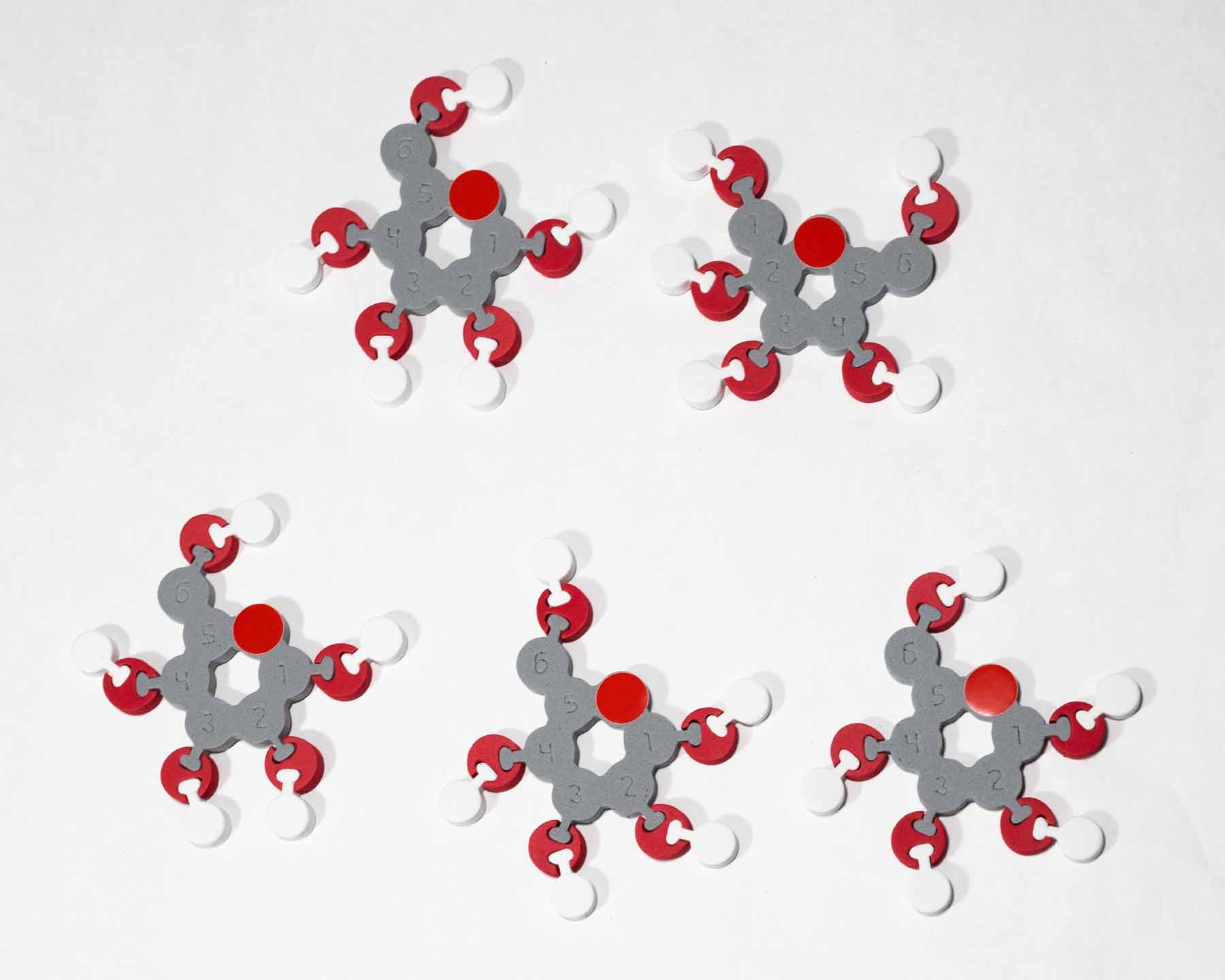
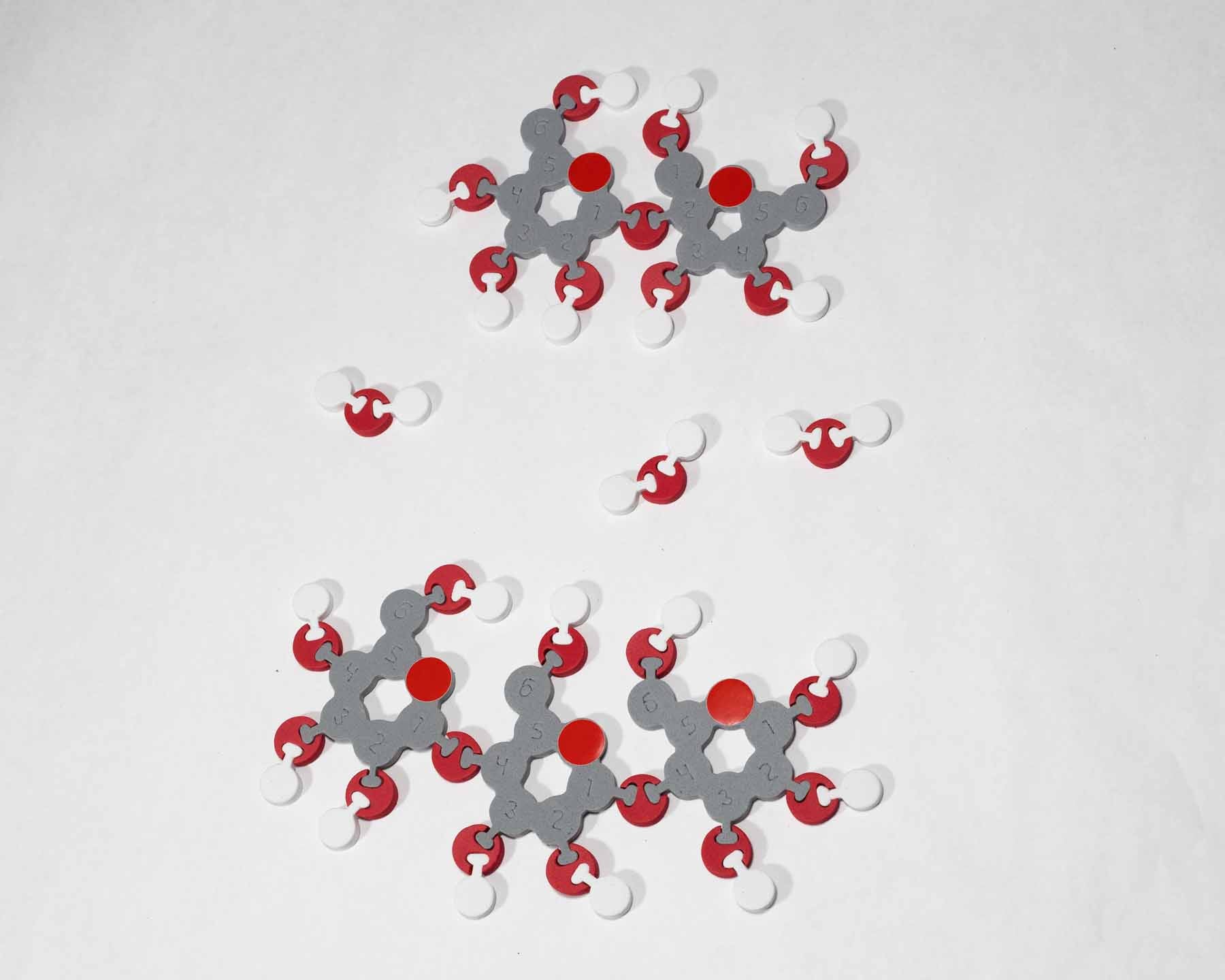
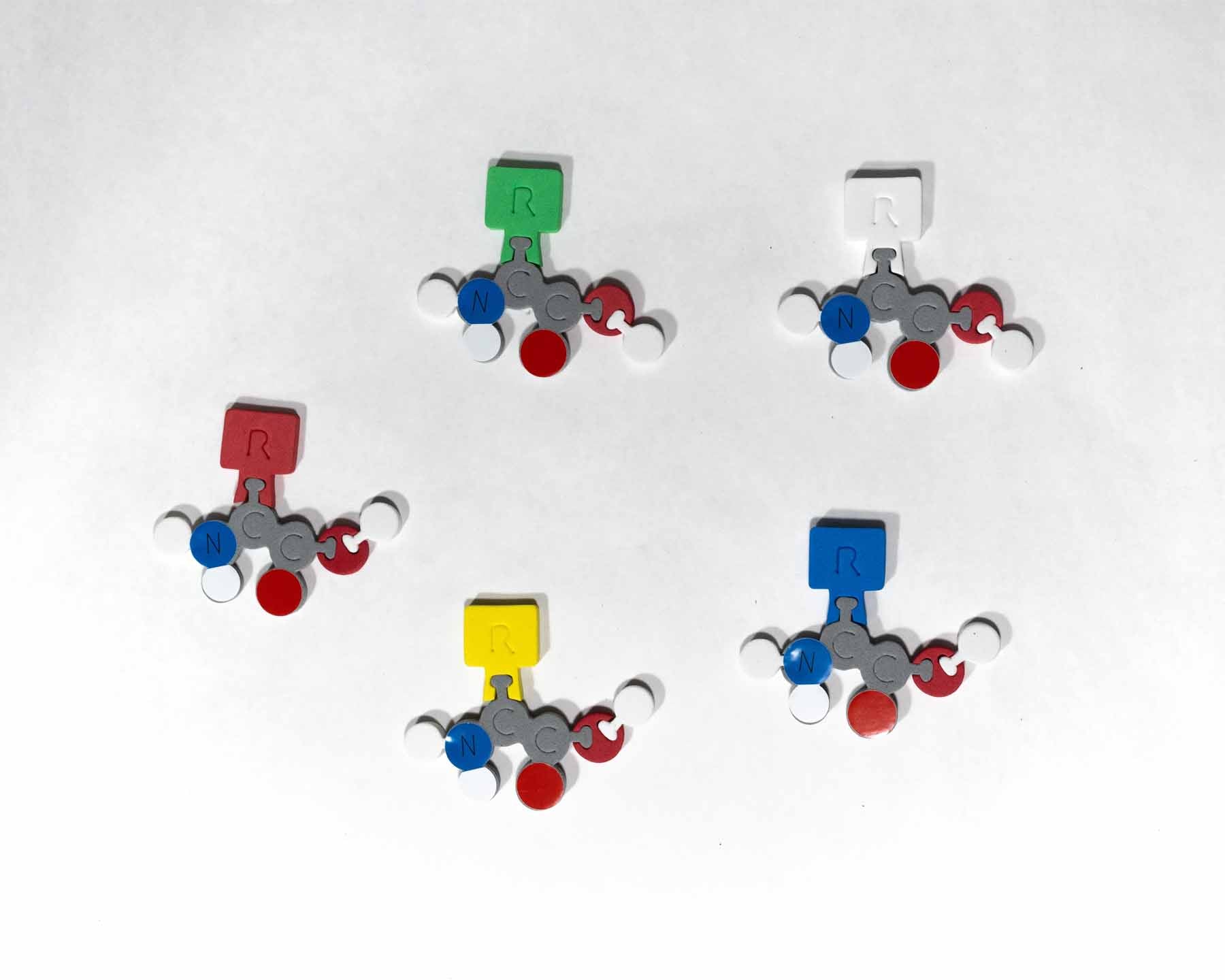
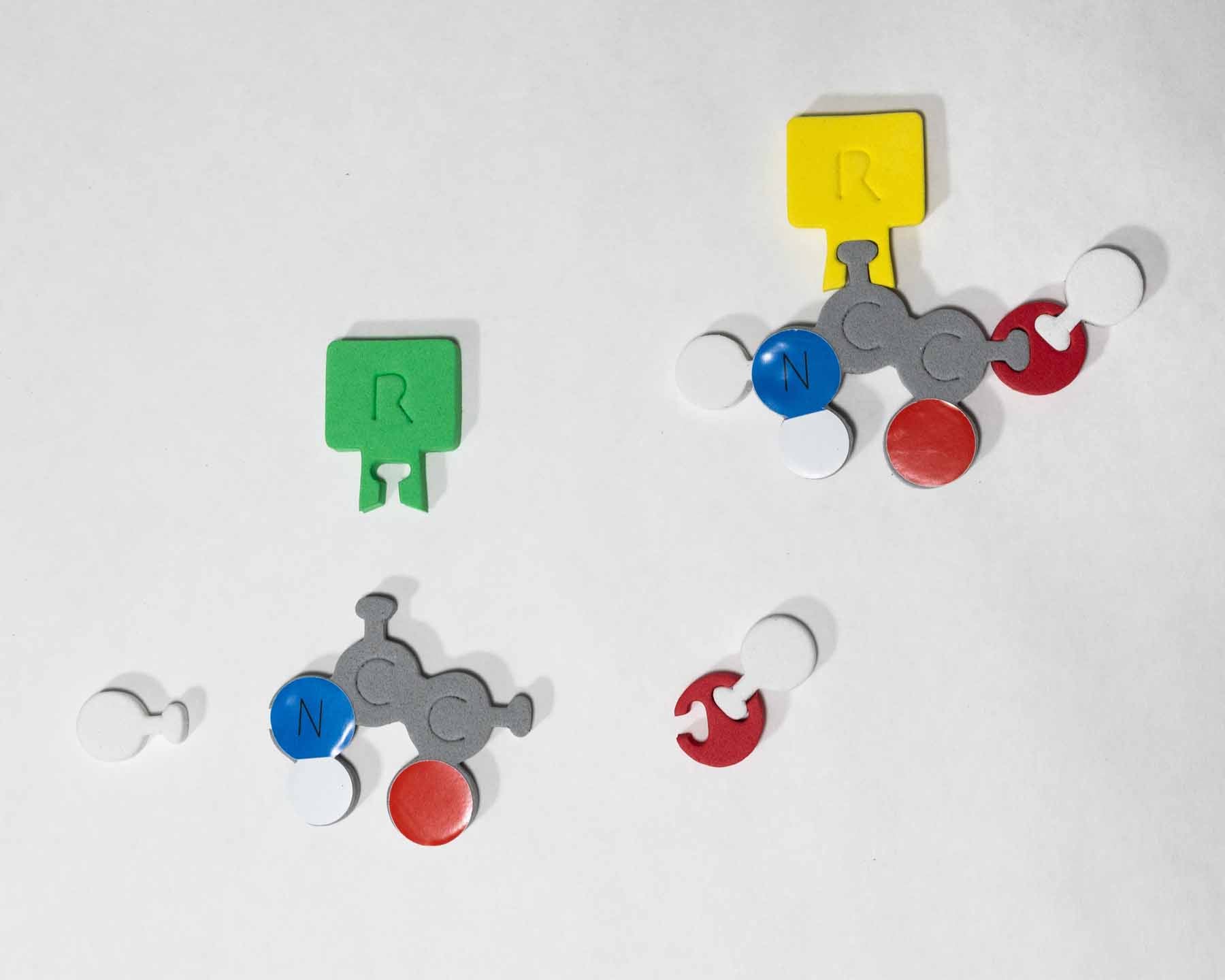
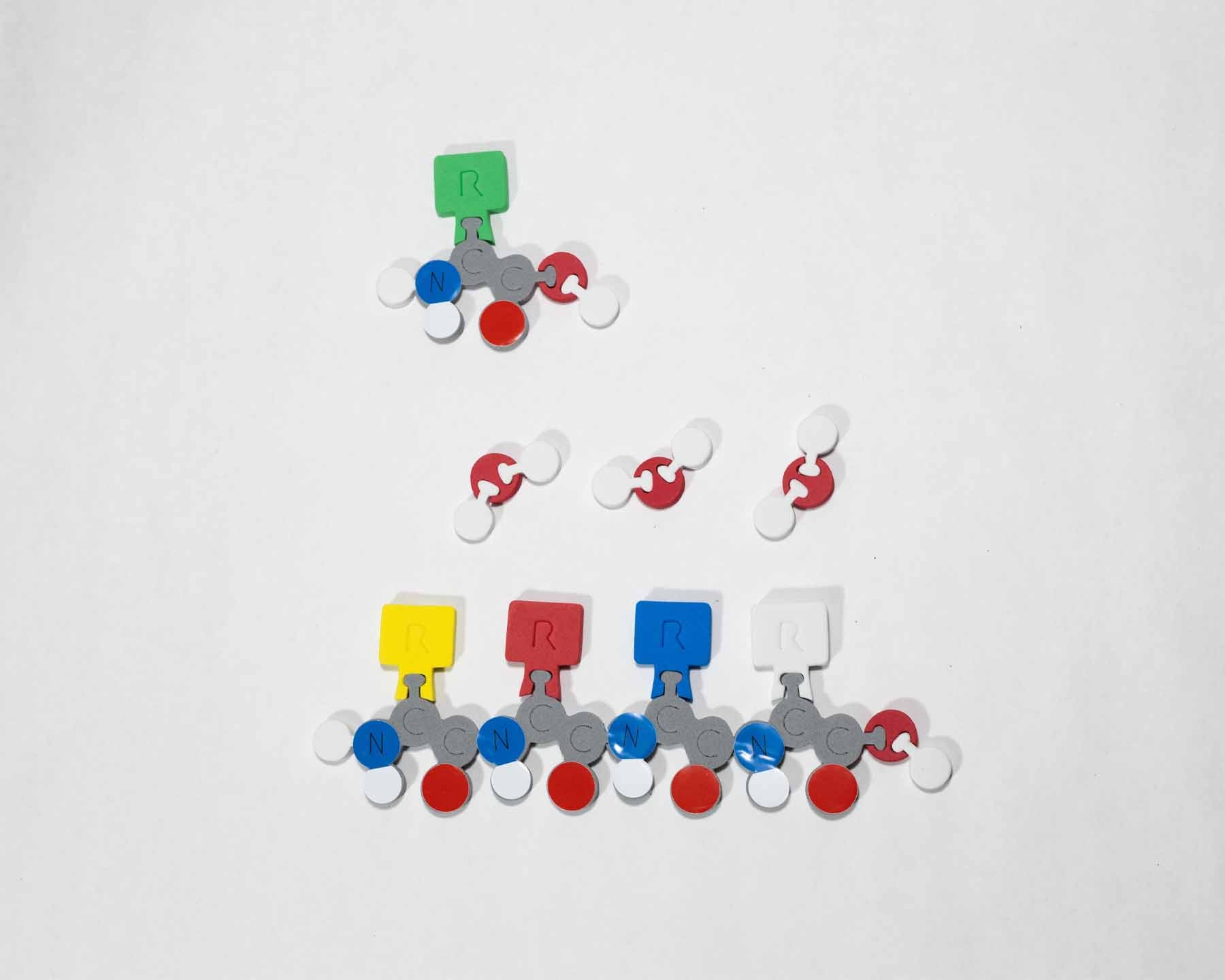
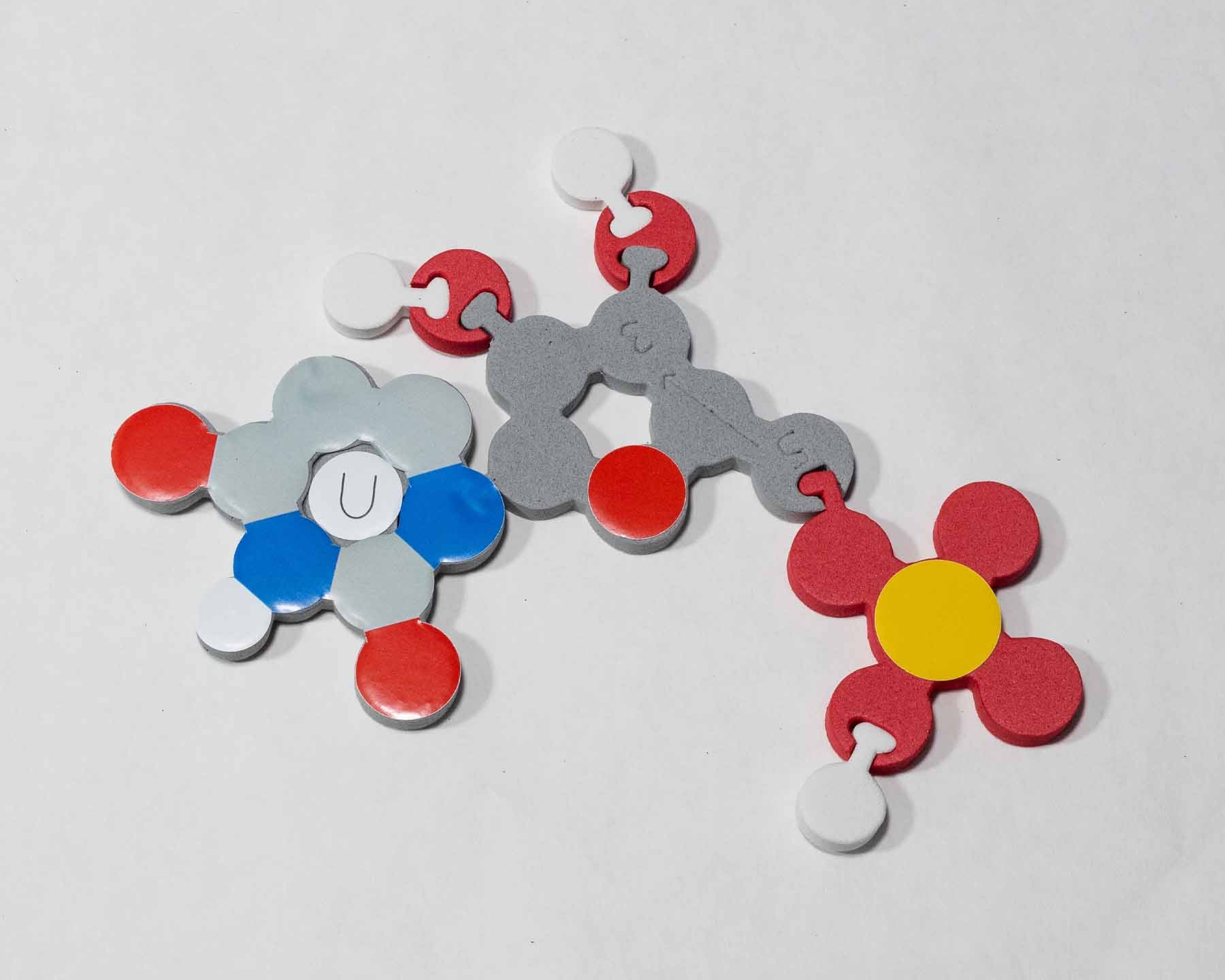
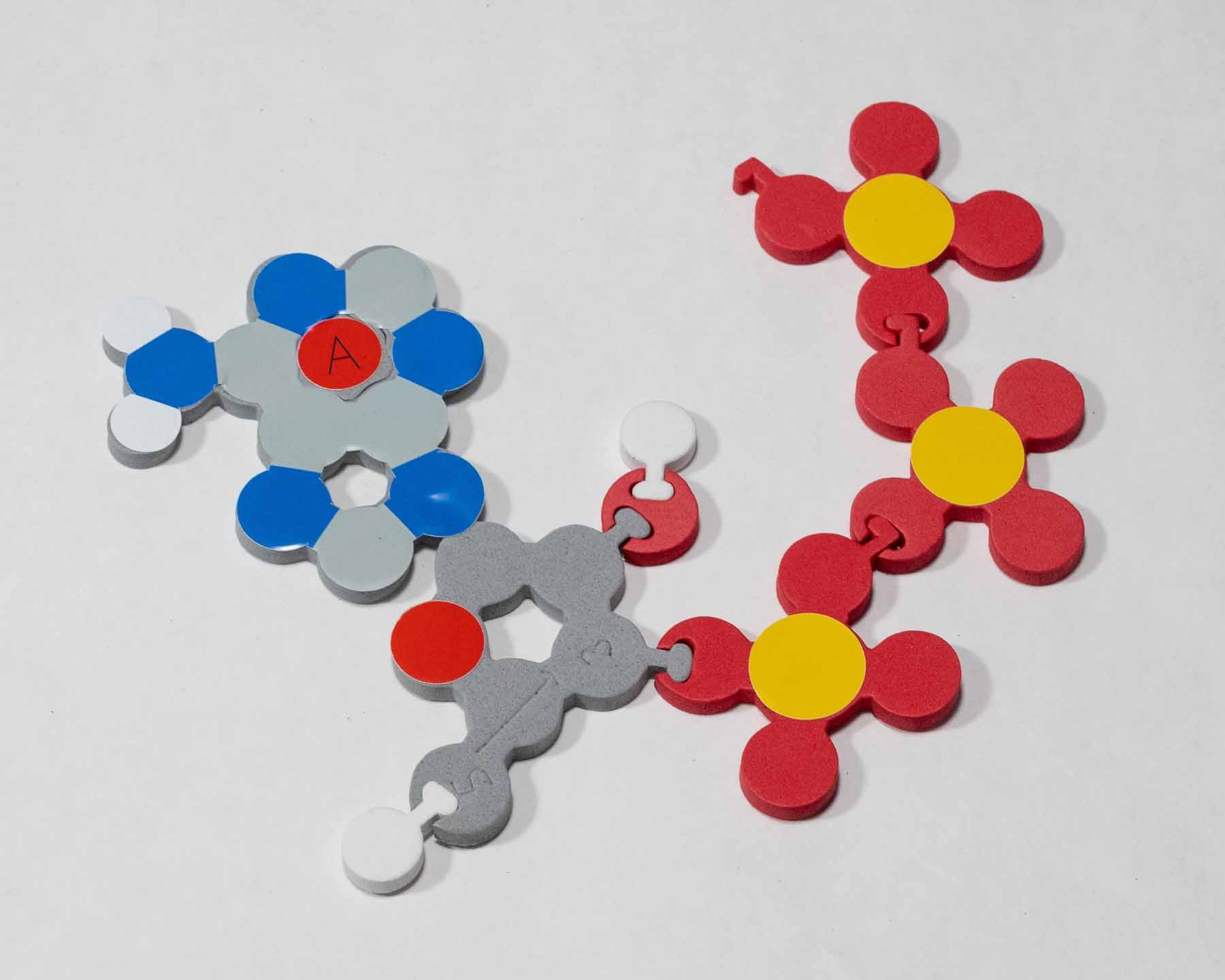
Molecules of Life Modeling Kit©
What better way to engage your students’ interest in macromolecules than with our new Molecules of Life Modeling Kit©? Your students will first model amino acids, nucleotides, carbohydrates, and phospholipids to gain an understanding of their monomer structure. Then they explore how the monomers join to form a protein, DNA, or a carbohydrate polymer like starch or cellulose, and a phospholipid bilayer macromolecule. And finally, they will see that phospholipids are not joined together by covalent bonds to make a polymer but spontaneously form a lipid bilayer membrane due to their amphipathic nature.
You’ll love that they’ll model dehydration synthesis nearly 20 times! They join the amino acid, nucleotide, carbohydrate monomers to form polymers, and they’ll attach the glycerol to a phosphate head and add two fatty acid legs to assemble the phospholipid.
In addition to the primary function of each molecule, there are five overarching concepts you can guide your students through with the coordinating slide decks:
-
The molecules are monomers that combine to form polymers or macromolecules.
-
The amino acids, nucleotides, and carbohydrates combine into polymers through a dehydration synthesis process, which is catalyzed by enzymes, forming a covalent bond between each monomer. Phospholipids combine through hydrophobic and hydrophilic interactions. Covalent bonds do not join phospholipids as they combine to form bilayers.*
-
The monomers and polymers or macromolecules shown on the slides are all at the same scale for your students to see and compare the relative sizes of the structures.
-
There are repeating patterns within structures, such as the -NCC-NCC-NCC- backbone in proteins. While using this modeling kit, your students will begin to recognize functional groups, such as the phosphate group within the DNA backbone and in the head component of phospholipids.
-
There is an essential relationship between structure and function, for the structure to be able to perform its function within an organism.
Designed for bioscience classrooms from middle school through college, your students engage in inquiry by observing and comparing models, noting similarities and differences between molecular structures, discussing their understanding, and sketching diagrams with labeled parts. The slide decks emphasize active participation, group discussion, and reflection in lab notebooks to reinforce connections between molecular structure and its roles in living organisms.






 Account
Account Shopping Cart
Shopping Cart